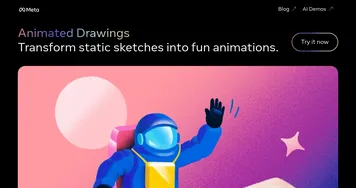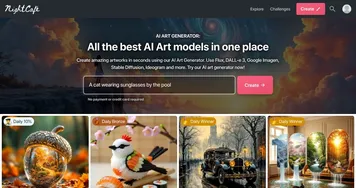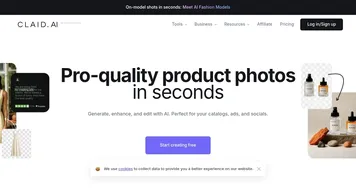Poppy AI

Poppy AI is a visual AI workspace designed to streamline content creation for marketers, founders, and creators by integrating multiple data types into a collaborative canvas. It combines AI models like ChatGPT and Claude to process videos, PDFs, images, and voice notes, offering a nonlinear alternative to traditional AI tools. Its core strength lies in the Visual Canvas, which allows users to drag and drop content, connect ideas, and generate insights or content outlines. The platform supports real-time collaboration, making it one of the first multiplayer AI tools available.
Key features include the ability to analyze diverse media simultaneously, create mind maps, and export data in formats like JSON or CSV. The Notion-like editor simplifies text editing, while API access on the Power User plan enables custom AI agent creation. Poppy AI handles large inputs — up to 200k tokens — making it suitable for processing extensive transcripts or videos. The platform also integrates with tools like Zapier for workflow automation, enhancing its utility for business applications.
Drawbacks include a steep learning curve for new users and a pricing model that some find expensive, with no free trial but a 30-day refund guarantee. Compared to Jasper, which focuses on text-based content creation, or Miro, a collaborative whiteboard tool, Poppy AI offers a unique blend of AI-driven content analysis and visual organization. However, it may not fully replace specialized tools like Jasper for copywriting or Miro for team brainstorming.
User feedback highlights strong customer support and time-saving features, with a 4.9 Trustpilot rating from 225 reviews. Some negative reviews mention pricing concerns and occasional complexity. The platform’s ability to streamline workflows for content-heavy tasks, like repurposing videos or building chatbots, is a standout.
To get started, upload a single piece of content to test the AI’s analysis capabilities. Use the Visual Canvas to organize ideas before diving into advanced features like API integrations, and take it from there…
Video Overview ▶️
What are the key features? ⭐
- Visual Canvas: Organizes ideas and content visually on a collaborative whiteboard.
- Multi-Media Analysis: Processes videos, PDFs, images, and voice notes simultaneously.
- Notion-like Editor: Simplifies text editing and content creation within the platform.
- Multiplayer Collaboration: Enables real-time teamwork on AI-driven projects.
- API Access: Allows power users to build custom AI agents for automation.
Who is it for? 🤔
Examples of what you can use it for 💭
- Content Creator: Repurposes YouTube videos into blog posts using AI-driven summaries.
- Marketer: Crafts high-converting email sequences from analyzed competitor ads.
- Educator: Organizes lecture notes and videos into structured, searchable archives.
- Founder: Builds custom AI chatbots for customer engagement using API access.
- Team Lead: Collaborates with a team on a shared canvas to brainstorm campaign ideas.
Pros & Cons ⚖️
- Saves time on content creation.
- Supports different media types.
- Integrates with workflow tools.
- Pricing may feel high.
FAQs 💬
Related tools ↙️
-
 Animated Drawings
Brings children's drawings to live by animating characters to move around
Animated Drawings
Brings children's drawings to live by animating characters to move around
-
 HeyPhoto
An AI-powered photo editor that allows users to easily enhance and modify their images
HeyPhoto
An AI-powered photo editor that allows users to easily enhance and modify their images
-
 BeautyPlus
A photo editing app that helps you easily enhance your pictures
BeautyPlus
A photo editing app that helps you easily enhance your pictures
-
 Kartiv
Use words and the power of AI to inspire your visuals
Kartiv
Use words and the power of AI to inspire your visuals
-
 NightCafe
Multi-algorithm text-to-image AI art generator
NightCafe
Multi-algorithm text-to-image AI art generator
-
 claid.ai
A suite of AI products to automate end-to-end image creation
claid.ai
A suite of AI products to automate end-to-end image creation

